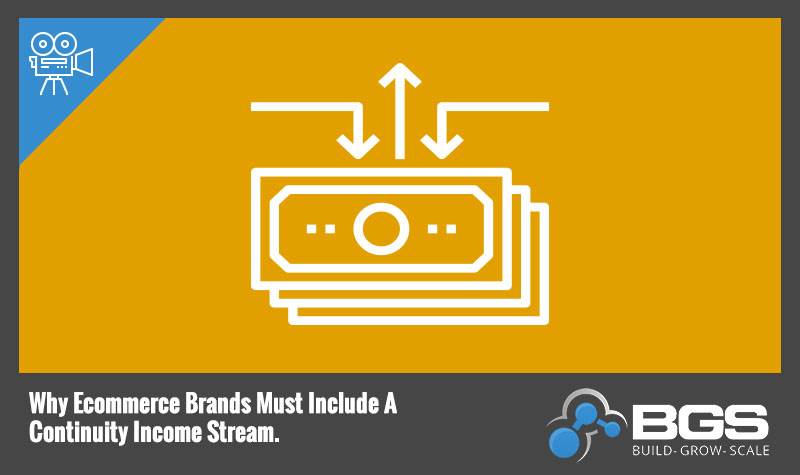Ecommerce Strategy: Why Ecommerce Brands Must Include A Continuity Income Stream

Video Highlights
- 0:10 Defining continuity
- 0:38 We all pay for continuity
- 1:00 Are you cash poor?
- 1:56 Building in recurring income
- 3:05 Predictable income is more valuable than unpredictable income
- 3:11 Business comparison
- 3:16 Business 1 example
- 3:37 Business 2 example
Hey, guys, Tanner Larsson here. I wanted to continue on this topic of recurring revenue, recurring income, continuity that I’ve been talking about in the last few videos. Let me define it real quick in terms of what I’m talking about.
When I say recurring revenue I’m talking about predictable, repeat billing, repeat income that’s coming in on a monthly, bimonthly, quarterly, annual basis, some kind of a subscription where a customer signs up, and they agree to pay you on an ongoing basis. It’s always been a big deal in some of the other industries, obviously software and things like that.
We all pay for continuity.
We’re all members of the continuity programs, Netflix; Amazon Prime is one; it’s an annual one. There are all kinds of them out there, but e-commerce businesses typically ignore them, but they’re so critical to an e-commerce business that I want to make a video specifically about why recurring revenue.
The big thing is that e-commerce businesses are traditionally rather cash poor. e-Commerce, while it is online, it doesn’t have the same overhead cost of a brick and mortar store, you still have inventory. You have advertising. You do have employee costs or your own salary. You have taxes; you have all kinds of stuff. It is not unusual for a million plus dollar a month e-commerce business to have less than $20,000 in the bank because they’re cash poor.
The reason they’re cash poor is inventory turnover, purchasing, raw materials, all that kind of stuff. Additionally, it’s also because their income is solely dependent upon purchases off the front-end, one time purchases or even repeat purchases but made off of static product that they sell once, they get the money for once.
They have to start at zero every single month, and it sucks to be cash poor. Nobody likes to be cash poor, but when you build in recurring revenue, and you make it a focal point of your business, it gives you the ability to have that baseline stable cash flow that comes in. Typically, it’s on a monthly basis, so it comes in month, after month, after month, and it continues to grow.
That makes you able to have a better cash flow for one. It also makes you more bubble tolerant and resistant to economic conditions whether that’s a recession or a change in your industry or algorithm changes with Facebook or with Google or things like that because you always have that baseline income, and it continues to grow. As long as you keep adding people to your continuity program at a rate faster than you’re losing people, which isn’t very hard to do, then that income is going to keep compounding over time.
The more you focus on it, the more it’s going to grow. Businesses and revenue are not created equal. That’s something that people don’t really understand. Yes, a dollar in sales is a dollar in sales, but in terms of predictability of how regularly you can get that same dollar, a dollar that is predictable is much more valuable than a dollar that’s not predictable.
What I mean by that is let’s look at 2 businesses. They both do $500,000 a month. Business 1, $500,000 a month in sales, no recurring income. When month 2 starts, they made $500,000 last month, but this month they start over trying to rebuild back to that same point they were at. There’s no compounding, there’s no momentum building. There are no building blocks in place. It’s literally starting over every month.
Now business number 2 has 50% of its income in continuity, and the rest of it is their regular sales. In this case, they end month 1 with $500,000 of revenue. At the end of month 1, they had $500,000, and they have their money in recurring revenue. At the start of month 2, they already start the month off at $250,000 worth of recurring revenue. Now they only have to hit $250,000 to make the same amount they made last month.
Now if they make the same amount that they made last month, now they did $750,000 in month 2. If they have that same 50% growth in continuity, that would mean they would start over on month 3 with $500,000 in continuity. Now of course this is a simplistic example, but that’s the power of recurring revenue and continuity. It’s why it’s so important that you build it into your e-commerce business. With that, I’m going to leave you with that little thought. I want you to start thinking about how you can build continuity into your business. I’ll see you later.






